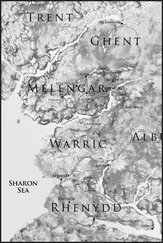Michael Neufeld - The Rocket and the Reich
Здесь есть возможность читать онлайн «Michael Neufeld - The Rocket and the Reich» весь текст электронной книги совершенно бесплатно (целиком полную версию без сокращений). В некоторых случаях можно слушать аудио, скачать через торрент в формате fb2 и присутствует краткое содержание. Город: Washington, Год выпуска: 2013, ISBN: 2013, Издательство: Smithsonian Books, Жанр: История, military_weapon, на английском языке. Описание произведения, (предисловие) а так же отзывы посетителей доступны на портале библиотеки ЛибКат.
- Название:The Rocket and the Reich
- Автор:
- Издательство:Smithsonian Books
- Жанр:
- Год:2013
- Город:Washington
- ISBN:978-1-58834-466-3
- Рейтинг книги:3 / 5. Голосов: 1
-
Избранное:Добавить в избранное
- Отзывы:
-
Ваша оценка:
- 60
- 1
- 2
- 3
- 4
- 5
The Rocket and the Reich: краткое содержание, описание и аннотация
Предлагаем к чтению аннотацию, описание, краткое содержание или предисловие (зависит от того, что написал сам автор книги «The Rocket and the Reich»). Если вы не нашли необходимую информацию о книге — напишите в комментариях, мы постараемся отыскать её.
The Rocket and the Reich — читать онлайн бесплатно полную книгу (весь текст) целиком
Ниже представлен текст книги, разбитый по страницам. Система сохранения места последней прочитанной страницы, позволяет с удобством читать онлайн бесплатно книгу «The Rocket and the Reich», без необходимости каждый раз заново искать на чём Вы остановились. Поставьте закладку, и сможете в любой момент перейти на страницу, на которой закончили чтение.
Интервал:
Закладка:
While Thiel remained at Experimental Center West, the Test Stand Group was set up by Klaus Riedel, the Raketenflugplatz alumnus who had spent the intervening years at the large electrical engineering firm of Siemens in Berlin. He had come to Peenemünde in a unique way. In 1936 Rudolf Nebel had emerged once again to haunt Army Ordnance. He had launched yet another campaign picturing himself as a persecuted and ignored inventor and had succeeded in enlisting the support of Dr. Fritz Todt, the builder of the autobahns and head of the Nazi Party’s engineering and technology organizations. About the same time Nebel received a belated patent with Klaus Riedel on Raketenflugplatz engine development. In order to neutralize him, the Army agreed to pay the two men 75,000 marks for the patent. As a part of the July 1937 agreement, Nebel was sworn to secrecy and excluded from the program. But not so Klaus Riedel, because von Braun wished to recruit his old friend for the expanded staff of Peenemünde. Riedel brought with him three other Raketenflugplatz veterans who had been at Siemens. 35
While the joint facility at Peenemünde was being built and staffed, the cooperative rocket plane program had continued as the other principal pillar of the Luftwaffe–Army alliance; indeed, it was the air force’s rationale for funding half the construction cost of the Army side of the facility. (Peenemünde-West was paid for solely out of Air Ministry funds.) Engine tests on the Junkers Junior began in early 1936. The objective was to gain further experience in installing and operating a liquid-fuel rocket engine in an aircraft, preparatory to putting one in an He 112 and then building an actual rocket fighter. In April von Braun wrote to the Air Ministry noting that a number of test firings had already been made, but the engine needed to be redesigned, and in any case it shifted the center of gravity of the airplane too far back. 36
That fact would have been relevant only if the craft were to be flown. Walter Riedel remembers von Braun wanting to pilot it himself. With his dream of spaceflight and his family’s wealth, it is not surprising that the young aristocrat had gone to glider school in 1931 and 1932 and had acquired a private pilot’s license for powered aircraft in September 1933. At Kummersdorf the Army had supplied him with an airplane for business trips since about 1935. At some point it was even a Junkers Junior. To fulfill a military service obligation, from May to July 1936 he attended a Luftwaffe flying school, and he took further courses in 1938. As a result, he held the status of pilot in the air force reserve. But he was never allowed to fly the rocket-equipped Junior, because his superiors were understandably concerned for his safety. Plans to fly the aircraft were canceled anyway because of numerous technical problems with the redesigned 300-kg-thrust engine. After explosions and burnthroughs of the new lightweight design, many further changes had to be made, and the experiments lasted until at least August 1936. 37
The Junkers Junior ground tests became primarily a pathfinder program for the bigger Heinkel project, which was funded by the Development Division of the Air Ministry Technical Office. During 1936 Kummersdorf designed, ordered the construction of, and test-fired the new “4B” series of 1,000-kg-thrust engines (later scaled down to 725 kg). An additional spectacular set of ground tests evolved from cooling and burnthrough problems in the Junior experiments. For the first time Kummersdorf’s rocket engines were fired horizontally rather than vertically, changing the fuel flow through the cooling jacket around the engine nozzle. The Heinkel works was concerned that the forces of acceleration acting on a turning rocket aircraft would disturb the flow of the liquid propellants around the engine, creating further overheating and burnthrough problems. Sometime in 1936 the von Braun group built an iron “carousel” or centrifuge at Kummersdorf, 10 to 12 meters across. The engine at the end of one arm was counterbalanced by propellant tanks and gas pressurization bottles at the other. Riding on the pivot in the middle was an armored control booth. Von Braun operated the engine controls and a brake while being spun around with the device at ten to twenty revolutions per minute. The feared effect of centrifugal force on engine cooling was not found. 38
Around the end of 1936 a “4B” motor was installed in an He 112 fuselage, but there were still distressing explosions and failures, usually caused by delayed ignition. Modifications were imperative. A sort of pilot light, or small flame, became the new igniter. To fit a rocket to a manned aircraft meant that the thrust had to be throttlable and the controls simple. The aim was to provide the pilot with a single lever that controlled engine thrust by controlling the release of the nitrogen gas that forced the propellants out of the tanks. But the Ordnance group did not have high confidence in this system. When the Luftwaffe test pilot assigned to fly the rocket-equipped He 112, Captain Erich Warsitz, first came to Kummersdorf, he stood beside the aircraft and watched as von Braun started the engine from the cockpit. The noise was ear-splitting. Later that night von Braun told him in a Berlin bar that he had witnessed the first time ignition had been done from inside the aircraft. Usually the engine was controlled from a concrete bunker many meters away. But von Braun and one of Heinkel’s designers had feared that Warsitz would never get in the cockpit if he observed the engine test that way! 39
Eventually the He 112 was flight-ready. On June 3, 1937, Warsitz attempted to ignite the rocket engine in the air for the first time after taking off under normal power. The experiment was carried out at an out-of-the-way airfield at Neuhardenberg, north of Berlin, because Peenemünde-West was unfinished. Warsitz started the ignition flame and then attempted to turn it off. Since it would not go out, he ignited the engine at half-power to prevent overheating. The acceleration was mild, and after ten seconds he stopped it again. The official report states:
After a short gliding flight, the pilot noticed a strong acrid odor of burning rubber and paint and clearly perceptible hot gases flowed under the pilot’s seat. The pilot looked to the rear and noticed a strong flickering in the tail area. The airplane at this time was still at an altitude of about a hundred meters. Because the pilot had to fear that the mobility of the control surfaces would be compromised by the fire in the tail section, and because the nitrogen for fire extinguishing was completely exhausted, he decided on an immediate landing. Sufficient altitude to extend the landing gear was no longer available. The aircraft landed with fully extended flaps on its belly and skidded about 45m along the ground.
Damage was significant. An unanticipated region of low aerodynamic pressure around the tail had caused alcohol fumes to be sucked back into the fuselage, where they were ignited by heating or the ignition flame. 40
The aircraft was repaired and flown at least a few more times over the summer by Warsitz. But the safety of the system was doubtful, so a redesign was in order. Ordnance, Heinkel, and the Air Ministry decided to use turbopumps instead of gas pressurization as the means of forcing the propellants into the combustion chamber and to employ an electric glowplug instead of an ignition flame. The development of turbopumps had begun as far back as mid-1935 because of the anticipated need for them in large rocket engines. Employing them in an aircraft had been discussed in early 1937, either for the He 112 or the pure rocket aircraft project, “P 1033,” which received the official Air Ministry designation Heinkel He 176 in December 1937. From the fall of that year, Ordnance engine development for the Luftwaffe followed two parallel tracks: similar but not identical turbopump-driven motors and tankage systems for the He 112 and 176. Innumerable design problems, however, caused both aircraft to lag farther and farther behind schedule. The He 112 equipped with an Army alcohol/liquid-oxygen engine was not to fly again until the autumn of 1939. The tiny He 176 never flew with such an engine at all. 41
Читать дальшеИнтервал:
Закладка:
Похожие книги на «The Rocket and the Reich»
Представляем Вашему вниманию похожие книги на «The Rocket and the Reich» списком для выбора. Мы отобрали схожую по названию и смыслу литературу в надежде предоставить читателям больше вариантов отыскать новые, интересные, ещё непрочитанные произведения.
Обсуждение, отзывы о книге «The Rocket and the Reich» и просто собственные мнения читателей. Оставьте ваши комментарии, напишите, что Вы думаете о произведении, его смысле или главных героях. Укажите что конкретно понравилось, а что нет, и почему Вы так считаете.












